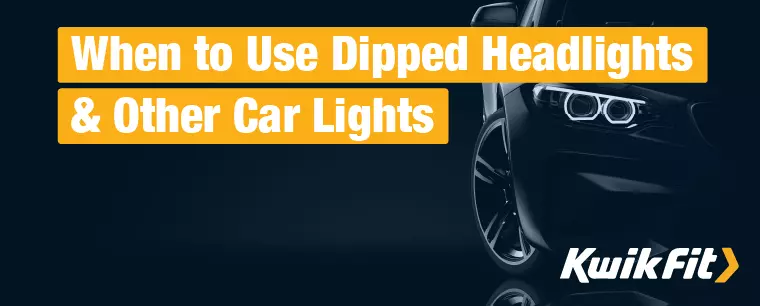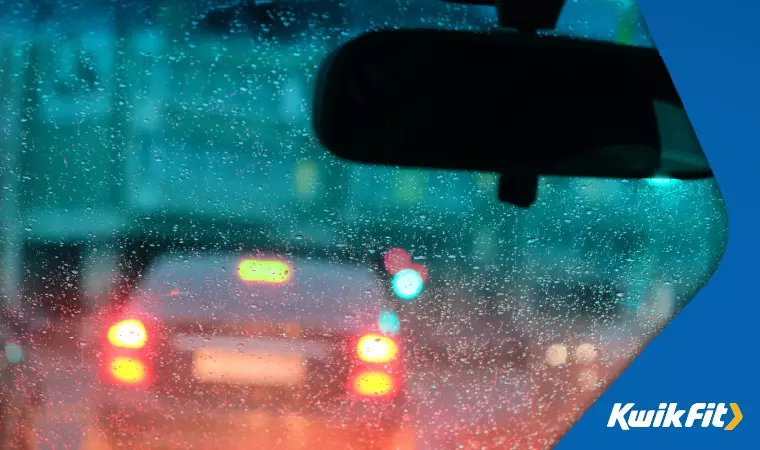When to Use Dipped Headlights & Other Car Lights
Jack Dreyer | Monday 15th May 2023 12:30pm

Headlights are one of those car components that you never notice until itís an issue. Usually, this comes in the form of other drivers with dazzling bulbs fitted or using the wrong headlights for different situations Ė but how do you know what headlights to use and when?
Hereís everything you need to know.
Highway Code headlight rules
The UKís Highway Code lays out a number of rules to ensure everyone drives safely on the road. The rules about lighting can be boiled, essentially, down to three main things:
- All sidelights & registration plate lights have to be lit at night Ė which is classed as 30 minutes after sunset until 30 minutes before sunrise.
- Always use sidelights and/or fog lights in low visibility.
- Donít dazzle other drivers with any lights, including hazard lights.
Before we look at these in more detail, letís quickly make sure weíre on the same page about the types of lights available on a car.
Types of headlights & car lights

Using the correct lights for different conditions ensures optimum visibility and helps to keep everyone safe on the road. The main types of lights are:
Sidelights
Indicators
Brake lights
Dipped beam headlights
Full beam headlights
Fog lights
Hazard lights
Most car designs make use of single-filament bulbs for different headlights Ė meaning they each operate at a different brightness level appropriate for their uses. An interesting note here is that the bulbs themselves arenít coloured, they simply shine brightly with a white (or sometimes blueish) colour and are passed through coloured glass to create the different colours we expect (for example, orange for indicators or red for brake lights).
For headlights, this usually means that thereís one set of bulbs for the dipped beam setting and another set of bulbs for the full beam. Depending on the specific car, these may be exactly the same brightness but angled differently Ė with dipped beam being angled towards the floor Ė but some designs use different brightness bulbs for the dipped beam and full beam.
Brake lights are turned on automatically every time you press the brake pedal in order to let other drivers know that you are slowing down.
When to use each headlight
Sidelights
Sidelights should be on at all times of reduced visibility. They donít really offer much in the way of improving your visibility but make it easier for other drivers to see you. This is hugely important when you consider how frequently people drift across lanes around bends & corners. Being essentially invisible can prove disastrous! On dark, rainy, or misty days, itís sensible to turn your sidelights on. Technically, you donít need to use sidelights when youíre on a street with lit street lighting, but itís often helpful to do so.
Dipped beam headlights
Dipped beam headlights create visibility in dark conditions while (when aligned correctly) pointing towards the floor, so they donít risk dazzling oncoming drivers very much except on bumpy roads or up/down hills. Be mindful of newer headlights on high-sitting SUVs as these are considerably brighter than older bulbs and are often aligned from the factory to point forwards Ė easily dazzling other drivers accidentally.
Use your dipped beam headlights at night or when visibility is seriously reduced so that you can see and be seen.
Like with your car horn, you should only ever flash your headlights to alert other drivers of your presence, not to indicate that they should move or to otherwise intimidate them.
Full beam headlights
These point forwards and tend to be much brighter than dipped beam headlights in order to clearly light up the road ahead. The obvious downside to this is that they can easily dazzle other drivers at night. You should only use your full beams when there arenít any cars ahead of you and itís important to turn them off as soon as you see an oncoming car.
Indicators
These should be used to signal whenever you are pulling over, moving off from parked, or when you are turning. They should be turned off once the turn has been made or when youíre safely in the flow of traffic. They should also be used to indicate that youíre overtaking another vehicle.
Hazard lights
Hazard lights are crucial for signalling to other road users that thereís, well, a hazard. You shouldnít use them as an excuse for illegal parking (such as on double yellow lines) but instead use them to indicate either that you are temporarily obstructing traffic (if, for example, your car has broken down) or to indicate a hazard further ahead. In the case of hazards ahead, drivers tend to turn on their warning lights in a series backwards while traffic slows down Ė which helps stop over-eager drivers overtaking at an unsafe speed. You shouldnít use the hazard lights for other reasons as they can obscure your brake lights.
Brake lights
These turn on whenever you press the brake pedal and help signal to other drivers that youíre slowing down. In some instances, you should gently brake when being tailgated to warn the driver behind that theyíre driving too close. The brake light coming on should be warning enough for them to fall back a little.
In standstill traffic at night Ė especially in wet, glary conditions Ė it can be good etiquette to engage the handbrake and take your foot off the brake pedal so that the drivers behind you donít get the glare. But this depends on the context of the situation. For example, if itís only a short stop and other cars are coming up quickly behind you, they may misread your brake lights coming off as a signal that you are pulling away.
Fog lights
Fog lights are usually a single, white strong-beam light at the back of your car. These should only be lit in heavy fog or heavy rain to help you remain visible and they should be turned off as soon as visibility clears because, like full beam headlights, they can easily dazzle drivers behind you.

Trouble with your headlights?
If youíre having trouble with any of your lights, trust the experts at your local Kwik Fit centre to have them working perfectly in no time.
Any facts, figures and prices shown in our blog articles are correct at time of publication.
Featured Articles
Is it Illegal to Drive With One Headlight?
Saturday 19th July 2025
Wondering if itís illegal to drive with one headlight? Learn about the safety risks and penalties of illegal blown bulbs and why you should fix them promptly.
Air Con in EVs & Hybrids: Experts Answer Your Questions
Monday 30th June 2025
Does air con drain EV batteries? Can you use the air con while charging an electric car? Find out the answers to these questions & more from Kwik Fitís experts.
Why Is Your Car Making a Noise? Fixes & Tips
Friday 13th June 2025
When your car starts making unexpected noises, it can certainly be quite disconcerting; it may be nothing to worry about, but hereís what you need to know.









